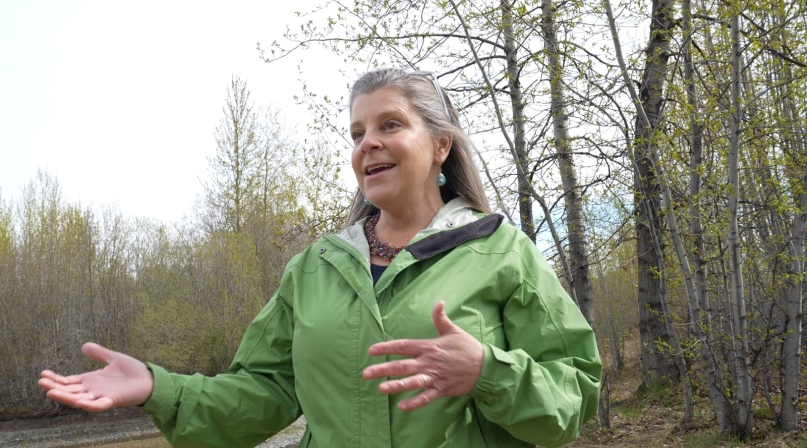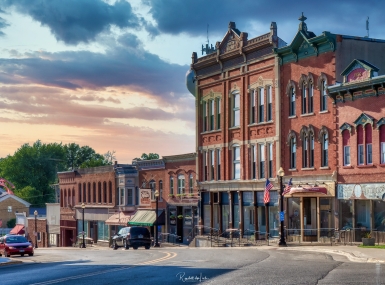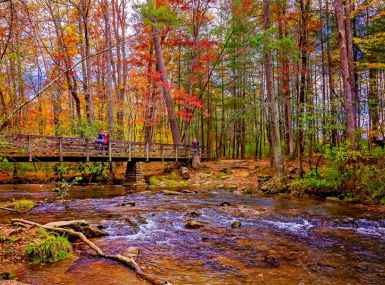Alaska throws ARPA lifeline to tour operator, local budgets

Key Takeaways
Angie Oberlitner lives her best life when she’s out and about in Anchorage, Alaska, showing off her home to visitors from all over the world.
So, there she was, instead sticking her head into a cardboard box lined with foam. But in 2021, that seemed like a pretty good deal, one that was allowing Alaska Step on Guides to survive and put it in a position to thrive, a year after she started to question whether the COVID-19 pandemic had put an end to her business. And while recording her tour stories for a smartphone app wasn’t what she had ever imagined, neither was anything else over the prior year.
“Most of our clients started canceling in February,” Oberlitner said of 2020, explaining that the cash outlays for business upgrades, insurance and permits put her business in debt before clients started coming in later in the year. “That’s just how Alaska business runs.
“By the time it was all said and done, we maybe did four different things in the entire season of 2020, so overall I took home probably a little over $1,000 that year.”
Looking ahead to 2021, she knew she was facing a make-it-or-break it season. A little more than a year after the pandemic put her on her heels, Congress passed the American Rescue Plan Act, and the Anchorage Borough Assembly awarded her funding in an effort to protect small businesses. ARPA’s $65.1 billion stimulus directly to county governments gave them wide latitude to spend their shares however they felt they’d get the best bang for their bucks. And for many of the local businesses that live and die on an expected stream of visitors, the borough offered some financial relief.
“That was very helpful for us,” said Anchorage Assembly Member Felix Rivera. “We’re a big enough city that we were able to do that and the ability to use the funds as we needed allowed us to target programs specific to industries that we knew needed that extra boost.”
Anchorage applied the same flexibility to gift cards the borough distributed to residents.
The tourism decline affected Alaskan boroughs and municipalities even more than states in the lower 48, because while their distance from population centers gave the state time to observe and prepare for the pandemic, coming to visit and spend money there wasn’t as easy as driving over a few state lines.
“We had almost no cruise ship passengers in 2020,” said Beth Waldron, mayor of the City and Borough of Juneau. “Our finance director was telling us that would be a $26 million hole in our budget.”
That was another ARPA feature — allowing counties to use funding to replace revenue lost because of the pandemic.
“We generally welcome north of a million tourists off cruise ships every year, plus an additional number of independent travelers,” said Robert Barr, Juneau’s deputy city manager.
Once ARPA passed, he said, the city and borough was able to conduct itself with less concern over revenue losses potentially meaning service reductions.
“We were able to focus on communicating with the city, with our residents, about you know what we do at every point in time during the pandemic,” he said. “ARPA allowed us to spend our energy on pandemic management. [Otherwise] we would have been spending our time figuring out which services we needed to shutter, because that was our alternative. Without ARPA, there’s no way that we would have made it through without a significant amount of layoffs.”
Barr said the reduction in administrative burdens placed on local governments by ARPA, compared to 2020’s CARES Act, made a huge difference.
“We could very easily demonstrate that we have lost much more than that in revenue, and that enabled our administration and our assembly to make very quick and easy decisions about where to best allocate those both within the community and within the city and borough government,” he said.
Waldron said that the assembly kept a close eye on the city and borough’s financial standing along with its battle against COVID-19.
“Luckily we’ve had pretty fiscally conservative assemblies before us, so we had a budget reserve, but our biggest fear was that we could survive a year but if this lasted more than one year, we were in a world of hurt trying to figure out revenues,” Waldron said. “City government just can’t move fast and raise money quickly. Doing an increase in sales tax requires a public vote, and at that time there wasn’t a lot of commercial activity.”
The pandemic abated in Alaska, and the local governments had a chance to stop just surviving and start looking ahead. Rivera said the ARPA funding allowed Anchorage to look more strategically at its workforce, noting that the yearlong hiatus in the tourism industry left many workers looking for new jobs, some of which wouldn’t return from when the economic climate improved.
“We’re hoping to look at funding some of the gaps in our workforce training,” he said. “Going into the future, our tourism industry can really come back strong, knowing that they have a healthy workforce.
“Some people didn’t have the necessary training,” he noted. “They want to know what’s next. We’ve been sort of so pandemic-focused, they really want to see where we’re going to in the future, what’s the next phase of Anchorage?”
Angie Oberlitner’s next phase view of Anchorage and the rest of Alaska took shape in 2021.
“The ARPA funds gave me enough of the bridge to pay debt that had rolled over from 2020 that was coming due in 2021 and it also kind of allowed us to just get a little bit of float space to see if visitors were going to come,” she said. “Boy, did they come.”
The difference was, people weren’t comfortable riding in a car with her, so Oberlitner drove separately and transitioned to walking tours. Then, working with a friend in the tour-guide business, an app offered her a chance to not only ensure the quality of every tour she essentially gave, but increase the number of visitors who would take tours simultaneously. Another ARPA grant from the borough supplied the start-up funding.
With GPS activation, the app can start playing Oberlitner’s narration when visitors reach specific points, and the tours themselves can be custom-made with different themes in mind.
“People who don’t want to get in a car with a local guide can still get that local knowledge from a lifelong Alaskan,” she said. “What we offer is that personal connection.
She’s nearing completion of her Seward, Kenai and Fairbanks apps. From her cardboard box recording studio, Oberlitner has used online audio editing software to put the tours together and has tested them on friends and family. The app allows her to be in two, three, four or more places at once.
“I’ve got tons of stories to tell, so they can still get that experience,” she said. “They can get the insider stories of, you know, the people and the places … it’s like a tour guide in your pocket.”
Attachments
Related News

Counties and Railroads: Shared Priorities for the Next Surface Transportation Bill
County leaders from across the country have a vital opportunity to ensure their infrastructure priorities are front and center.

House reintroduces bipartisan legislation to level playing field for rural communities
House reintroduced the Rural Partnership and Prosperity Act, bipartisan legislation intended to advance economic development in rural counties and overcome barriers to obtaining federal funding and resources.

Podcast: Eastern Tennessee counties invest in tourism during shutdown
Sevier County, Tenn. refused to let the government shutdown devastate its fall tourism draw—Great Smoky Mountains National Park. County Mayor Larry Waters describes the lengths he and his neighbors went to keep the park open. And NACo Chief Government Affairs Officer Mark Ritacco offers an outlook on what counties can take away from the shutdown and into the future.
